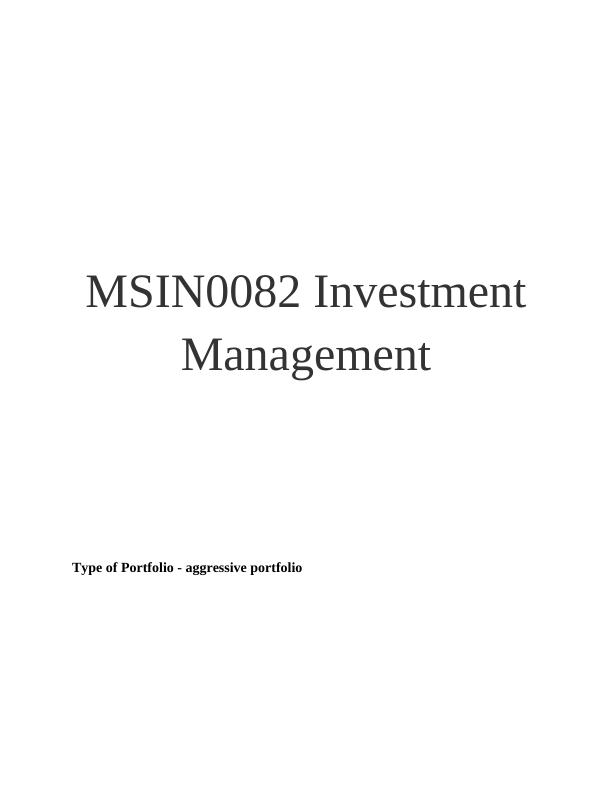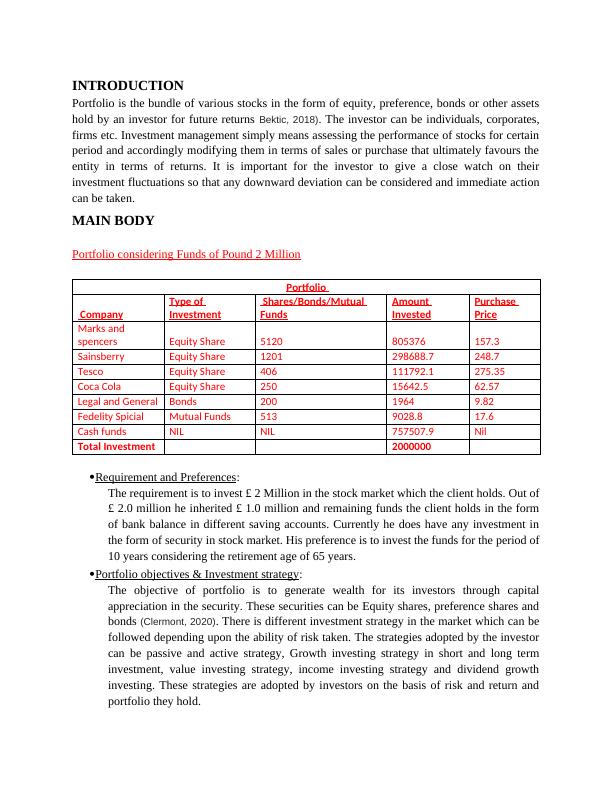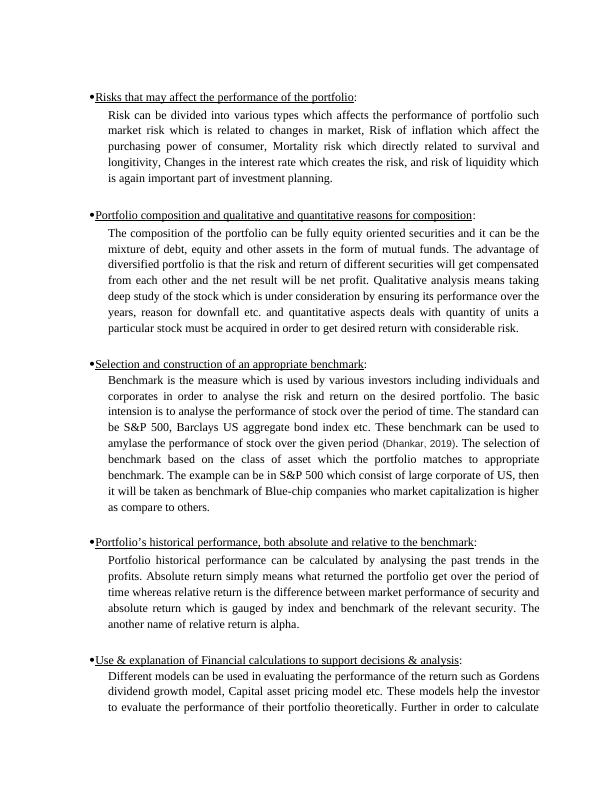Investment Management Portfolio: Aggressive Portfolio for £2 Million Funds
6 Pages1343 Words326 Views
Added on 2023-06-13
About This Document
This report discusses an aggressive portfolio for £2 million funds in investment management. It covers portfolio objectives, investment strategies, risks, composition, benchmark selection, historical performance, financial calculations, and predicted future returns.
Investment Management Portfolio: Aggressive Portfolio for £2 Million Funds
Added on 2023-06-13
ShareRelated Documents
End of preview
Want to access all the pages? Upload your documents or become a member.
Investment Management Portfolio Analysis and Performance
|11
|3608
|361
A Project Report on Overview of Portfolio Management
|14
|4926
|90
Finance Portfolio Management
|6
|921
|464
Investment and Portfolio Management | Assignment
|9
|1842
|55
Investments - Masters Level
|10
|2445
|100
Paper on Investment Analysis
|7
|1325
|158



